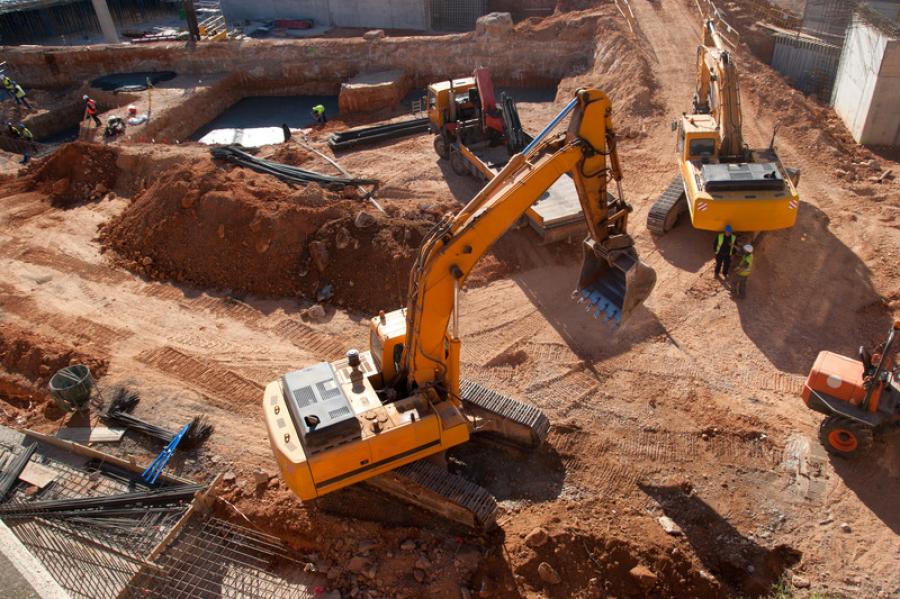A new report analyzes how new construction and demolition varied, intersected and diverged in Harris County between 2005 and 2015.
Construction in Harris County has far outpaced demolition over the last 10 years, according to a new report from Rice University's Kinder Institute for Urban Research.
“Houston in Flux: Understanding a Decade of Bayou City Development” analyzes how new construction and demolition varied, intersected and diverged in Harris County between 2005 and 2015. The report spotlights the effects of economic booms and busts, draws attention to the spaces where development pressures are most extreme or nonexistent and highlights instances of communities rising or being remade within a decade. Redevelopment, preservation and gentrification can be visualized on the interactive online component accompanying the report.
During the research process, report authors Kelsey Walker, a postbaccalaureate fellow at the Kinder Institute, and Kyle Shelton, program manager for the Kinder Institute's Urban Development, Transportation and Placemaking program, used data from the Harris County Appraisal District (including building and permit records). The researchers sorted each census tract into one of four groups (high-turnover, demolition-intensive, construction-intensive and low-turnover) and then analyzed tracts in each of these categories.
The report's key finding revealed that at the county level, new construction far outpaces demolition. At the end of 2015, 15 percent of properties in Harris County contained buildings constructed since 2005, while only 1.7 percent of properties had a demolition permit during that time period.
The researchers also found that the area between State Highway 6-Farm-to-Market Road (FM) 1960 and the Grand Parkway has the highest percentage of construction sites in Harris County — 37.4 percent — followed by the area between Beltway 8 and State Highway 6-FM 1960, which has 23.6 percent of the county's construction sites. The area between Loop 610 and Beltway 8 and the area outside the Grand Parkway has the lowest percentage of construction sites, 19.7 percent and 8.4 percent, respectively.
In contrast, the area inside Loop 610 has the highest percentage of demolition sites in Harris County — 43.4 percent — followed by the area between Loop 610 and Beltway 8, which has 42.6 percent. The area between Beltway 8 and State Highway 6-FM 1960 trails with 11.7 percent of the county's demolition sites, and the areas between State Highway 6-FM 1960 and the Grand Parkway and outside the Grand Parkway have the lowest percentage of demolition sites, 1.8 percent and 0.5 percent, respectively.
Other findings from the report include:
• A near majority of census tracts are classified as low-turnover areas, where few major changes to the building stock have occurred since 2005; about 20 percent are demolition-intensive, where a large fraction of buildings have been demolished but new developments are rare; another 16 percent are construction-intensive, which have high rates of new construction but relatively low rates of demolition; and the final 5 percent are high-turnover, in which both demolitions and new development are common.
• The pattern of construction and demolition suggests that the majority of construction over the past decade has taken place on previously undeveloped or vacant property.
• Fifty-two percent of sites with demolitions in the past 10 years had either new construction or were tied to a building permit. The remaining 48 percent had neither construction nor building permits. The fraction of demolition sites doubling as new construction sites varies considerably across the Houston area, suggesting that these properties remain vacant.
“The data and methodology we use in our report lets us understand how frequently — and in what areas — demolition and construction take place on the same properties,” Walker said. “It turns out that only about half of the properties with demolition permits double as sites of new construction. This means that the overwhelming majority of construction in the county is taking place on empty land, rather than replacing existing structures.”
“These statistics and the visualizations confirm a great deal of the anecdotal evidence of development trends in Harris County,” Shelton said. “We talk a lot about where growth and demolitions are happening, now we can see them side by side. Moreover, these tools help us see that some areas experiencing high demolitions are also home to high construction rates. Others are not. So where some demolitions signal redevelopment and new homes, others point to stagnation and vacancies in the built environment.”
Walker and Shelton said the Kinder Institute intends to build additional data atop this built-environment evolution map. Subsequent reports will incorporate socio-demographic data into the analyses and may also include additional built-environment factors such as vacancies, home sales or dangerous buildings.
“We hope that the report spurs further conversation and inquiry into regional development trends,” the authors said. “In addition, we hope that the interactive map will serve as a countywide resource that empowers residents to visualize and quantify construction and demolition activity in their own communities.”
For a full copy of the report, visit http://kinder.rice.edu/DTP/. The report's interactive online map is accessible at www.houstoninflux.com.
For more information, visit http://news.rice.edu/.
(This story also can be found on Construction Equipment Guide's website at www.constructionequipmentguide.com.)
Today's top stories
















